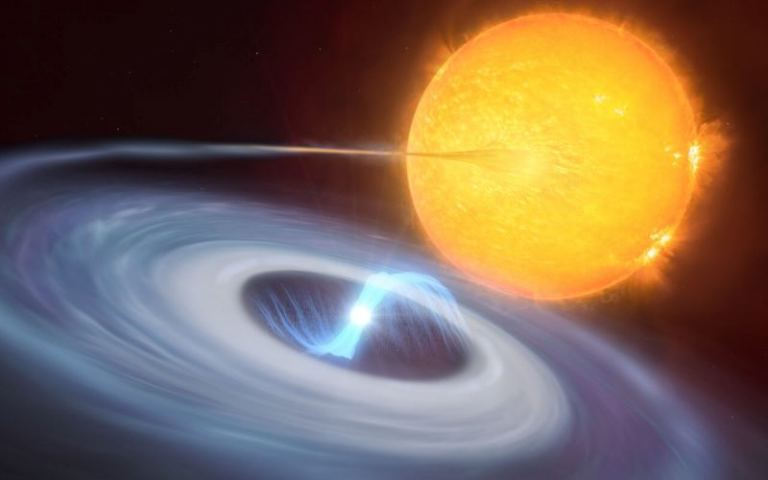Report by Swasti Sharma
The most energetic explosions in the universe come from stars called supernovae.
When the pressure is low in a massive star, gravity overcomes and the star collapses in a few seconds. This collapse produces an explosion called a supernova.
These galactic bombs or explosions have the energy of about 1028 mega-tons (a unit to measure the amount of energy).
There are two types of supernovae. The first type happens in a binary star system (two star system), where the two stars are gravitationally bound by each other where one star is a white dwarf (a very small star, nearly the size of a planet). The white dwarf collects matter from its companion star and explodes, leaving nothing behind it.
The second type occurs when a star with enough mass, nearly to be in the range of eight to fifteen solar masses (the mass of the sun used as a unit of mass), runs out of nuclear fuel (a fuel that provides nuclear energy, for example it’s also used in nuclear power stations, nuclear submarines) and its core collapses. The bounce/ rebound from the collapse causes its outer layers to expand outward, leaving behind a neutron star or black hole.
Another type of stellar explosion is known as a nova which has much less energy and covers the surface of a white dwarf. A nova also happens on a white dwarf star in a binary star system and when enough material gathers on the surface of the star, a fusion reaction (two light nuclei merge to form a single heavier nucleus) happens causing an explosion that submerges the whole surface. This blast emits as much energy as our sun releases in 10,000 years.
A team of astronomers with the help of European Southern Observatory’s Very Large Telescope (ESO’s VLT), have observed a new type of stellar explosion which is a micronova. It is similar to supernovae and novae but with much less energy.
Micronovae are extremely powerful events, but are small on astronomical scales.
These are not all that small, just one of these outbursts can burn through about 20,000,000 trillion kg, or about 3.5 billion Great Pyramids of Giza, of material.
The team observed three micronovae with TESS (Transiting Exoplanet Survey Satellite), of which two were from known white dwarfs, but the third required further observations with the X- shooter instrument on ESO’s VLT to confirm its white dwarf .
Micronovae are much less energetic compared to the stellar explosions known as novae. All the types of stellar explosions occur on white dwarfs, dead stars with a mass about that of our Sun, but as small as Earth. A white dwarf in a binary star system can steal material, mostly hydrogen, from its companion star if they are close enough. As this gas falls onto the very hot surface of the white dwarf star, it activates the hydrogen atoms to fuse into helium explosively. Such explosions make the entire surface of the white dwarf burn and shine brightly for several weeks.
Micronovae are similar explosions that are smaller in scale but faster and last just a few hours. They occur on some white dwarfs with strong magnetic fields, which supply material towards the star’s magnetic poles.
Image Credit: ESO

